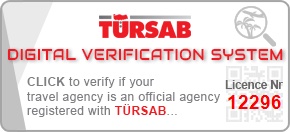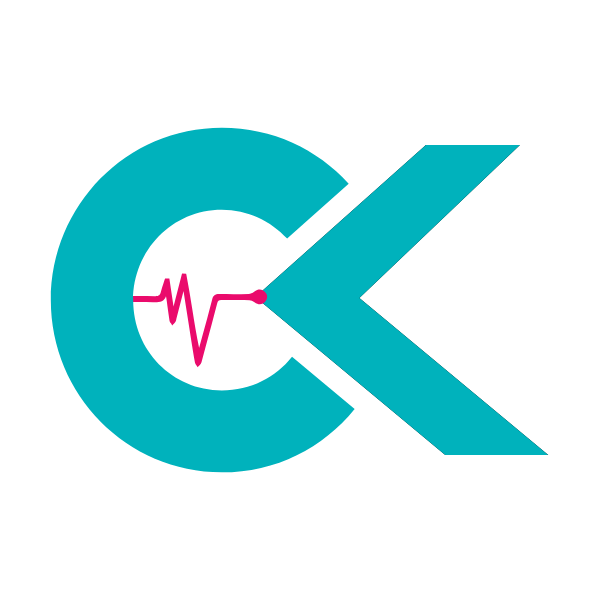The concept of a “mommy makeover” has traditionally been associated with mothers seeking to restore their pre-pregnancy physiques. However, an evolving understanding of aesthetic surgery reveals a broader demographic benefiting from these transformative procedures. Contemporary medical literature and patient demographics demonstrate that individuals who have not experienced childbirth are increasingly opting for mommy makeover surgeries. This trend underscores a shift in perspective, recognizing that body changes necessitating such interventions can arise from various life events beyond maternity. The procedures encompassed within a mommy makeover, such as breast augmentation, lift, tummy tuck, and liposuction, address concerns like skin laxity, volume loss, and localized fat deposits. These concerns are not exclusive to post-pregnancy bodies, but rather are common experiences across a diverse population. Therefore, the nomenclature itself is undergoing re-evaluation to reflect this expanded applicability, ensuring that anyone considering these procedures feels included and understood.
Table of Contents
Is a Mommy Makeover Only for Mothers? Who Actually Qualifies?
Despite its name, a mommy makeover is not exclusively for mothers. This comprehensive surgical procedure addresses various body changes that can occur regardless of parental status. The term “mommy makeover” originated from the procedure’s popularity among mothers seeking to restore their pre-pregnancy bodies, but it has evolved to encompass a broader range of candidates.
The misconception that only mothers qualify for this procedure stems from its marketing and naming conventions. In reality, any woman experiencing body changes that affect her confidence and self-image may be an excellent candidate. Our extensive experience performing these procedures reveals that approximately 30% of patients have never been pregnant.
Several groups of women can benefit from mommy makeover procedures:
- Women who have experienced significant weight fluctuations
- Those with genetic predispositions to breast ptosis or abdominal laxity
- Individuals seeking comprehensive body contouring after bariatric surgery
- Women whose bodies have changed due to ageing or hormonal fluctuations
- Those who desire enhancement of multiple body areas simultaneously
The eligibility criteria focus on physical health and realistic expectations rather than motherhood status. Candidates must be in good overall health, maintain stable weight, and understand the surgical process fully. Women without children often present ideal candidates because they don’t face the physical stresses of pregnancy and breastfeeding that mothers experience.
Benefits of mommy makeover for non-moms include addressing multiple aesthetic concerns simultaneously. The procedure typically combines breast enhancement, tummy tuck, and liposuction to create comprehensive body transformation. Women without pregnancy-related changes often achieve more predictable results because their tissues haven’t undergone the stretching associated with pregnancy.
Body changes addressed through mommy makeover regardless of parental status include:
- Breast volume loss or asymmetry
- Abdominal muscle separation (diastasis recti can occur without pregnancy)
- Excess skin and fat deposits
- Loss of skin elasticity due to genetics or weight changes
- Stubborn fat pockets resistant to diet and exercise
The procedure’s versatility allows surgeons to customise treatment plans based on individual needs rather than pregnancy history. Non-mothers often require different surgical approaches compared to post-pregnancy patients. For instance, breast procedures may focus on augmentation rather than lifting, while abdominal work might emphasise contouring over muscle repair.
Recovery considerations for women without children often differ significantly. They typically have fewer physical demands during healing, allowing for better adherence to post-operative restrictions. This can contribute to optimal healing outcomes and results.
Can non-moms get mommy makeover procedures? Absolutely. The decision depends entirely on individual anatomy, aesthetic goals, and overall health status. Many plastic surgeons report excellent satisfaction rates among childless patients who undergo these comprehensive procedures.
Do you have to be a mom for mommy makeover surgery? The answer is definitively no. The procedure’s name shouldn’t deter qualified candidates who could benefit from comprehensive body contouring. Modern cosmetic surgery recognises that body image concerns transcend motherhood status.
Women considering this procedure should focus on their personal goals rather than whether they fit traditional patient profiles. The combination of procedures offers efficiency and cost-effectiveness that appeals to various demographics seeking body transformation.
The Medical Perspective: Are There Any Clinical Requirements?
From a clinical standpoint, cosmetic surgery procedures require thorough medical evaluation to ensure patient safety and optimal outcomes. Our experience demonstrates that specific health criteria determine surgical eligibility for comprehensive body contouring procedures.
Essential medical criteria include overall cardiovascular health, with blood pressure maintained below 140/90 mmHg. Laboratory values must fall within normal ranges, particularly haemoglobin levels above 11 g/dL and platelet counts exceeding 150,000/μL. Body mass index requirements typically range between 18.5-30 kg/m², though individual assessment remains paramount.
Key medical considerations include:
- Complete blood count and comprehensive metabolic panel within normal limits
- Absence of active infections or chronic inflammatory conditions
- Stable weight maintenance for minimum six months prior to surgery
- Current medications review, particularly anticoagulants and immunosuppressants
- Psychological readiness assessment and realistic expectation alignment
- Adequate support system for post-operative recovery period
Medical contraindications encompass uncontrolled diabetes mellitus, active cardiovascular disease, bleeding disorders, and autoimmune conditions requiring immunosuppressive therapy. Smoking cessation remains mandatory four weeksbefore and after surgical intervention to prevent wound healing complications.
The comprehensive evaluation process follows established protocols to determine surgical candidacy:
- Initial consultation involves detailed medical history review, physical examination, and photographic documentation of treatment areas
- Laboratory testing includes complete blood count, coagulation studies, liver function tests, and cardiac assessment when indicated
- Risk stratification evaluates American Society of Anaesthesiologists physical status classification and identifies potential complications
- Anaesthetic consultation determines fitness for general anaesthesia and addresses specific concerns regarding prolonged surgical procedures
- Final clearance confirms all medical requirements met and surgical timeline established
Cost considerations significantly impact treatment decisions. The following comparison demonstrates substantial financial differences between surgical destinations:
| Procedure | Turkey (£) | England (£) | Savings (£) |
|---|---|---|---|
| Tummy Tuck | 3,500-4,500 | 8,000-12,000 | 4,500-7,500 |
| Breast Augmentation | 2,800-3,800 | 6,000-9,000 | 3,200-5,200 |
| Liposuction | 2,200-3,200 | 4,500-7,500 | 2,300-4,300 |
| Combined Package | 7,000-9,500 | 18,000-28,000 | 11,000-18,500 |
Pre-operative optimisation includes nutritional assessment, with protein intake recommendations of 1.2-1.5 grams per kilogram body weight daily. Iron supplementation may be necessary for patients with borderline anaemia. Hydration status requires careful monitoring, particularly in candidates considering multiple simultaneous procedures.
Advanced imaging studies, including chest radiographs or electrocardiograms, become necessary for patients over 45 years or those with cardiovascular risk factors. Pulmonary function testing may be indicated for candidates with respiratory conditions or significant smoking history.
Our clinical protocols emphasise individualised assessment rather than rigid criteria application. Patient safety remains the primary determinant in surgical candidacy decisions, with comprehensive evaluation ensuring optimal outcomes and minimising perioperative complications. By incorporating Mommy Makeover Candidacy Costs Recovery into the process, patients often wonder, do I need to be a mother to have mommy makeover surgery? It’s essential to consult with a qualified surgeon to explore all available options tailored to individual needs.
Finding the Right Surgeon: Questions to Ask About Non-Traditional Candidates
Selecting a cosmetic surgeon requires thorough evaluation of their expertise with diverse patient populations and surgical approaches. The choice becomes particularly critical when considering body contouring procedures, as surgeon experience with varied anatomical presentations directly impacts surgical outcomes and patient satisfaction.
Board certification status represents the foundational credential for any aesthetic surgeon. Verify certification through the General Medical Council (GMC) and confirm membership in recognised professional bodies such as the British Association of Aesthetic Plastic Surgeons (BAAPS) or the British Association of Plastic, Reconstructive and Aesthetic Surgeons (BAPRAS). These certifications demonstrate adherence to rigorous training standards and ongoing professional development requirements.
Essential consultation questions help evaluate surgical expertise and approach compatibility:
- How many body contouring procedures do you perform annually across different patient demographics?
- What percentage of your practice involves patients with varying body types and surgical goals?
- Can you provide before-and-after photographs demonstrating results across diverse patient populations?
- What specific techniques do you employ for different anatomical presentations?
- How do you customise surgical approaches based on individual patient anatomy and expectations?
- What revision rates do you experience, and how do these compare across different patient groups?
- Which anaesthesia options do you recommend, and how do you determine the most appropriate choice?
Technical proficiency assessment involves understanding the surgeon’s approach to complex cases. Experienced practitioners demonstrate familiarity with advanced techniques including progressive tension sutures, layered closure methods, and muscle repair variations. They should articulate how surgical planning differs based on individual anatomical considerations and explain their decision-making process for combining procedures.
Facility accreditation ensures surgical safety standards. Operations should occur in CQC-registered facilities with appropriate emergency protocols and post-operative monitoring capabilities. Private hospitals such as those within the BMI Healthcare network or Nuffield Health typically maintain stringent safety standards for aesthetic procedures.
Communication style evaluation proves equally important as technical credentials. Surgeons should demonstrate understanding of diverse motivations for body contouring surgery and avoid assumptions about patient circumstances. They should discuss realistic outcomes, potential complications, and recovery timelines without making presumptive statements about patient lifestyle or family status.
Portfolio diversity indicates comprehensive experience. Request documentation of surgical outcomes across various patient presentations, including different ages, body types, and surgical complexity levels. Experienced surgeons maintain extensive photographic records demonstrating consistent results regardless of patient demographics.
Professional reputation verification involves multiple sources. Check medical tribunal records, professional society memberships, and peer recognition through awards or speaking engagements. Patient testimonials should reflect experiences from individuals with similar surgical goals and anatomical presentations.
Consultation thoroughness reveals surgeon quality and approach. Comprehensive evaluations include detailed medical history review, physical examination, surgical planning discussion, and risk assessment. Surgeons should allocate sufficient consultation time for thorough evaluation and question answering without rushing the decision-making process.
Financial transparency demonstrates professional integrity. Detailed cost breakdowns should include surgical fees, facility charges, anaesthesia costs, and post-operative care expenses. Reputable surgeons provide written estimates and explain payment policies clearly, including revision surgery policies and associated costs.
The surgeon-patient relationship foundation relies on mutual understanding and realistic expectation setting. Qualified practitioners focus on individual anatomical assessment, personalised surgical planning, and comprehensive post-operative support rather than making assumptions about patient background or motivations. Professional competencecombined with empathetic patient care ensures optimal surgical outcomes and patient satisfaction across all demographic groups seeking body contouring procedures.



